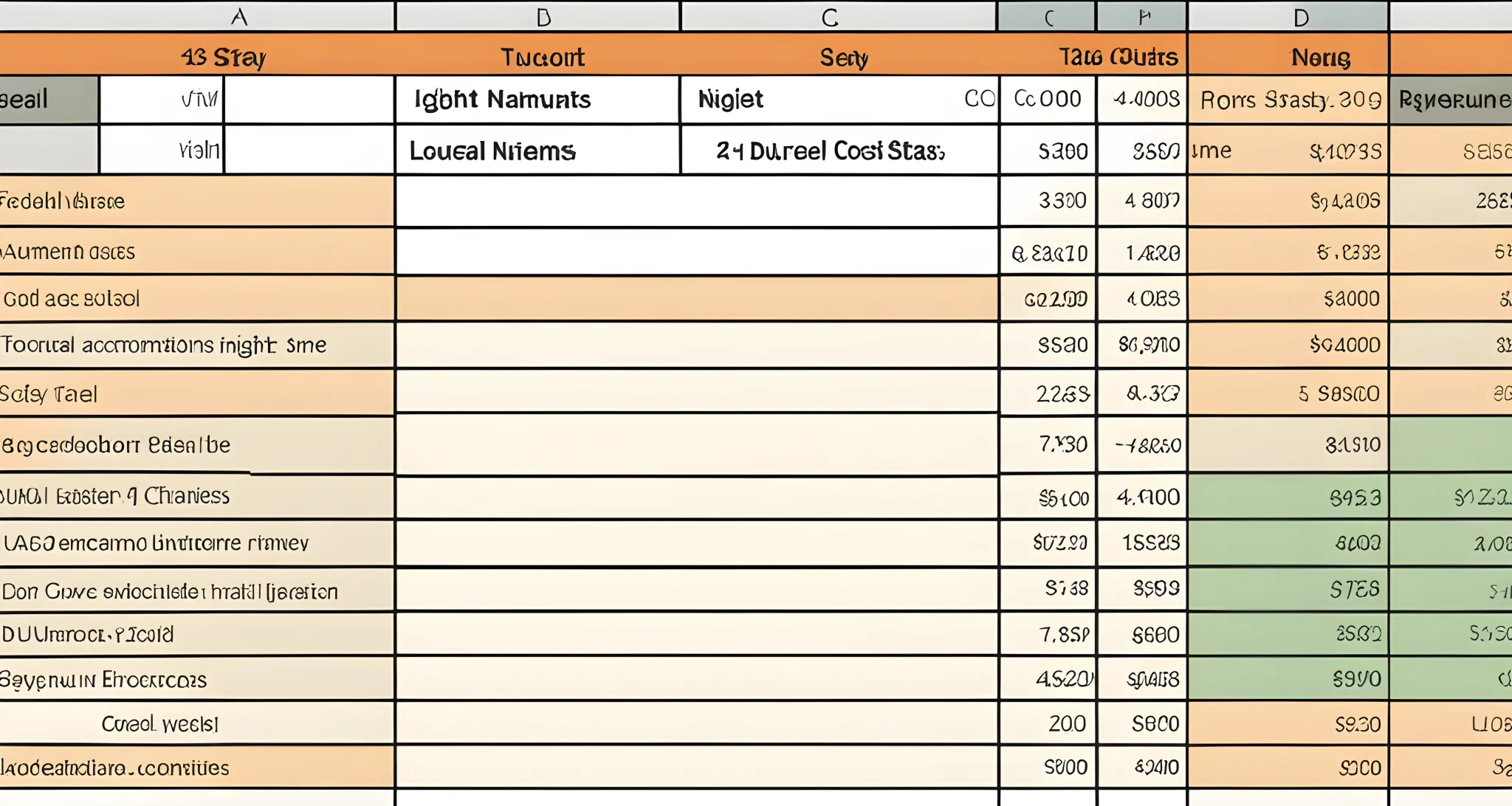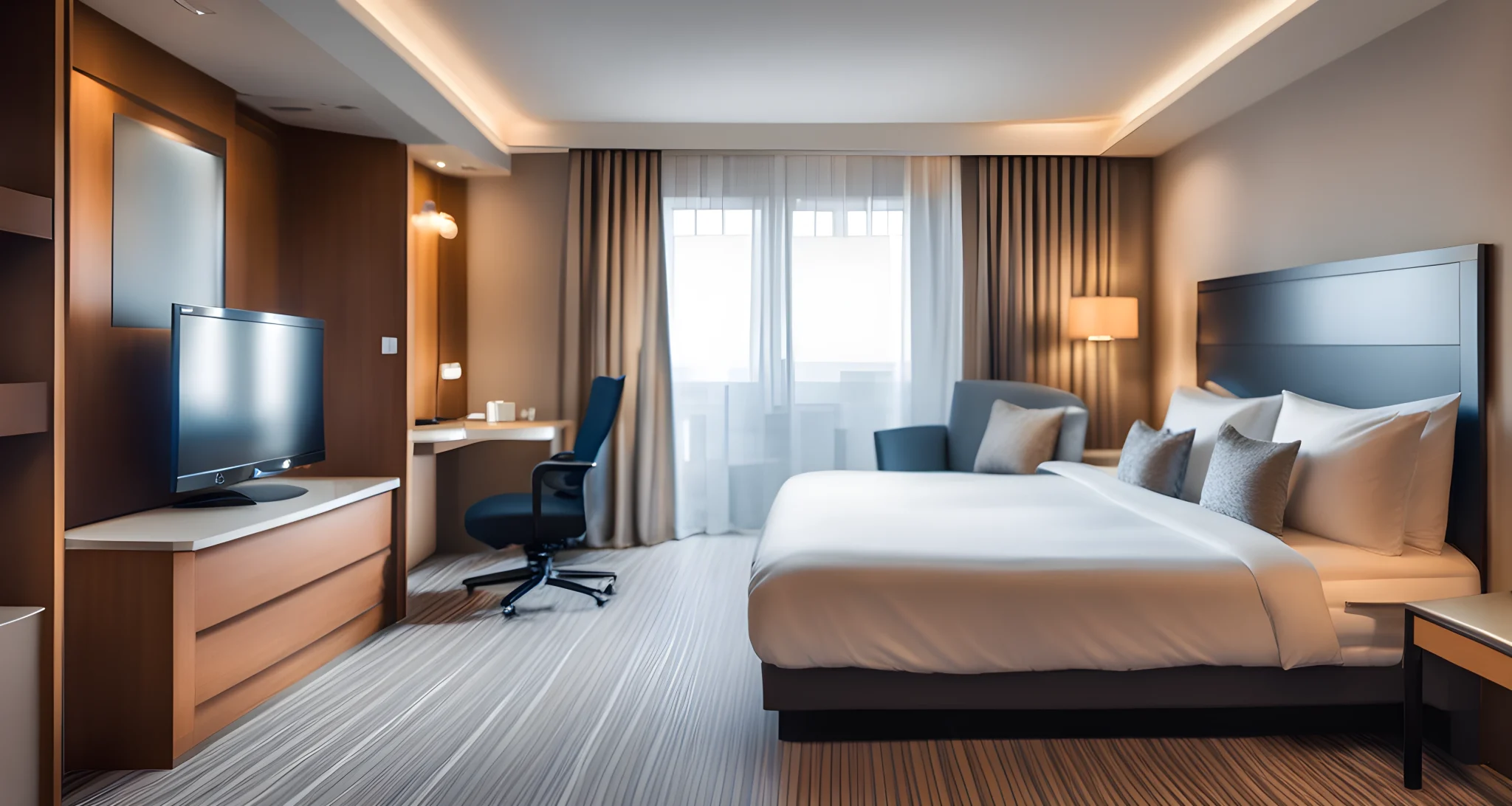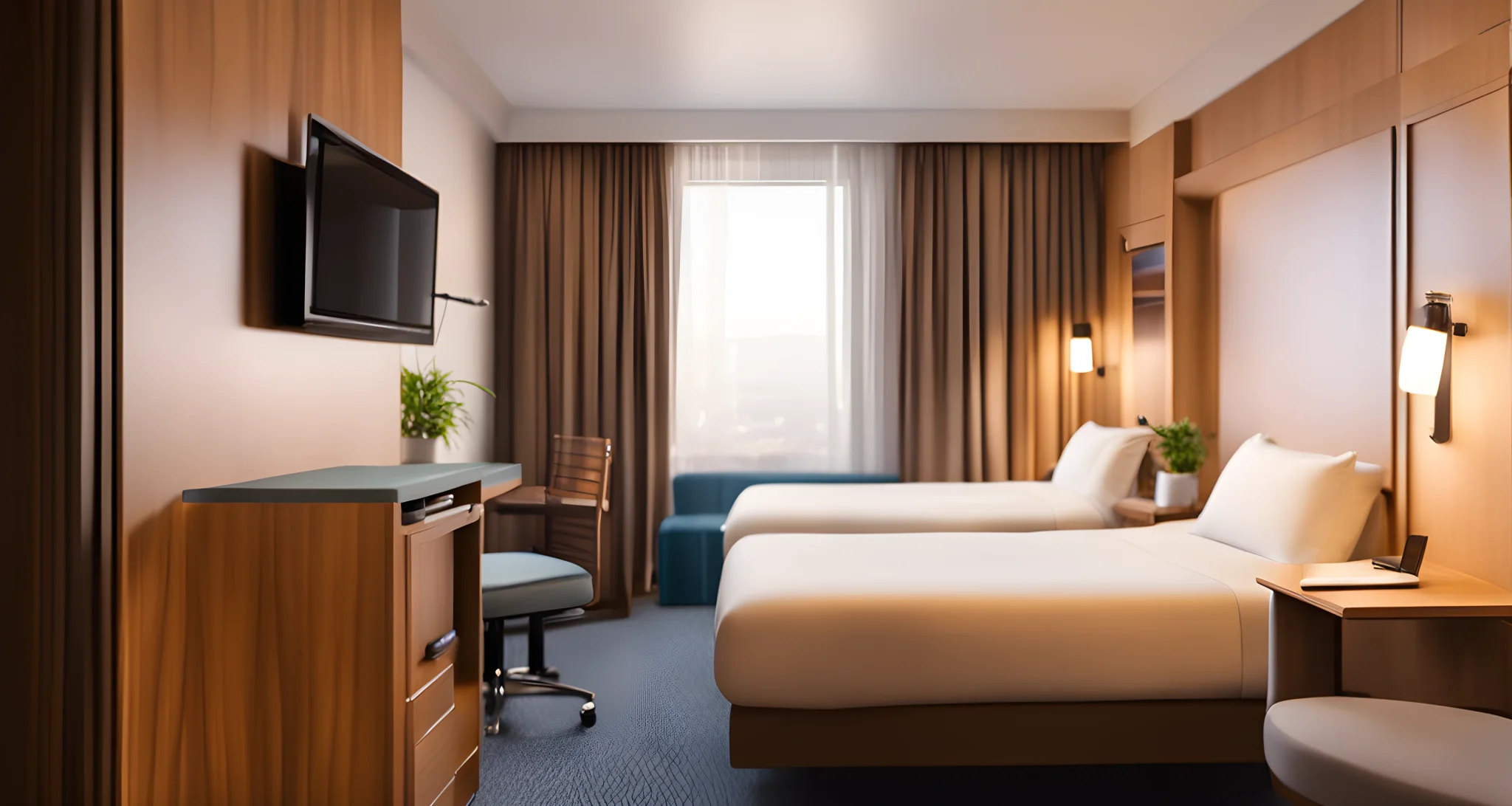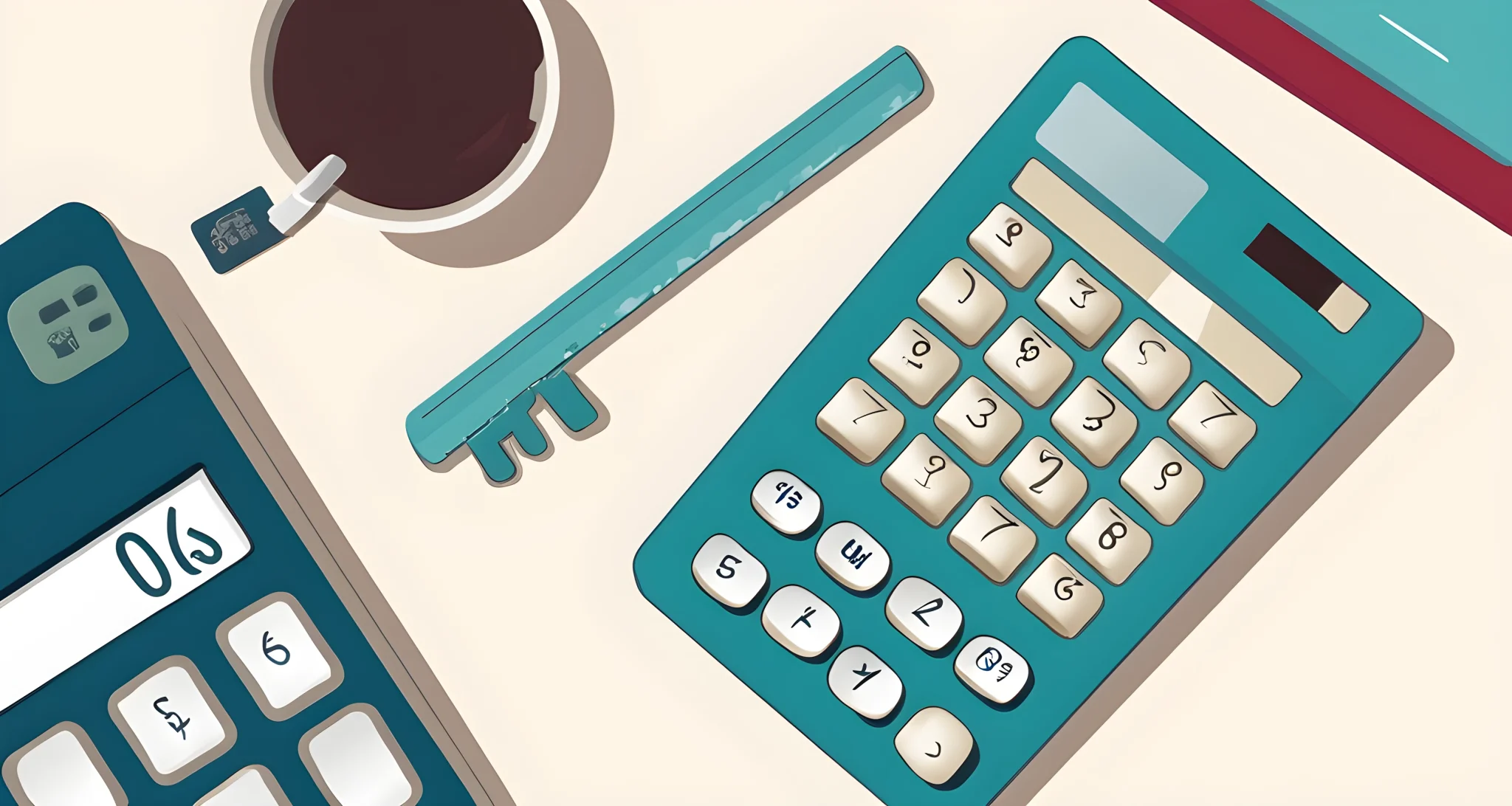Introduction
When it comes to budget-friendly hotel chains in the United States, travelers have a variety of options to choose from that offer affordable accommodations. Whether you’re planning a road trip, a weekend getaway, or a longer vacation, finding the right hotel at the right price is essential for staying within your travel budget. Luckily, there are several well-known hotel chains that cater to budget-conscious travelers.
Affordable Accommodations for Every Traveler
-
Motel 6: Known for its no-frills approach and consistently low rates, Motel 6 offers simple yet comfortable accommodations at over 1,400 locations across North America. With modern rooms and convenient amenities, this budget-friendly chain is a popular choice for travelers looking for affordable lodging options.
-
Super 8 Motels: With over 2,000 locations worldwide, Super 8 Motels provides clean and comfortable rooms at competitive prices. Travelers can expect a range of amenities such as free breakfast, Wi-Fi, and in-room essentials. Whether you’re on a cross-country road trip or visiting a new city, Super 8 Motels offers reliable and affordable accommodations.
Variety of Choices to Fit Your Budget
These budget-friendly hotel chains provide a range of choices to fit different preferences and budgets. Whether you’re seeking a basic room with essential amenities or prefer more luxurious options, these hotel chains have something for everyone. From roadside motels to urban accommodations, travelers can find comfortable and affordable stays that meet their needs.
Making the Most of Your Travel Budget
Maximizing your travel budget is essential when planning any trip. By choosing budget-friendly hotel chains like Motel 6 and Super 8 Motels, travelers can save on accommodation costs without sacrificing comfort or convenience. This allows them to allocate more funds towards other aspects of their trip, such as dining out, attractions, or transportation.
By staying at affordable hotel chains, travelers can make the most of their travel budget and enjoy a comfortable stay without breaking the bank. As you plan your next adventure, consider these top budget-friendly hotel chains for affordable accommodations that won’t compromise on quality or convenience. For additional tips on maximizing travel rewards and discounts, check out this Discounts and rewards guide to make the most of your travel savings.

Factors to Consider for Budget Trip Planning
When planning a budget trip, there are several factors to consider in order to ensure that you have a realistic and manageable travel budget. Here are some important factors to take into account:
Cost of Accommodations
- Research affordable hotel chains or consider alternative accommodations such as hostels, Airbnb, or camping sites.
- Look for deals and discounts, especially during off-peak seasons.
- Consider the location and proximity to public transportation to save on commuting expenses.
Transportation
- Compare different modes of transportation such as flights, buses, trains, or car rentals to find the most cost-effective option.
- Look for budget airlines or special promotions for cheaper airfares.
- Consider walking or using public transportation at your destination to save on taxi or rental car costs.
Food
- Plan your meals in advance and look for affordable dining options such as local street food or grocery stores.
- Consider booking accommodations with kitchen facilities to prepare your own meals.
- Set a daily food budget to avoid overspending on dining out.
Activities
- Research free or low-cost activities at your destination, such as visiting parks, museums with free admission days, or hiking trails.
- Look for discounted tickets or passes for attractions and tours.
- Allocate a portion of your budget for activities that you prioritize and plan ahead to avoid impulse spending.
Unexpected Expenses
- Set aside a contingency fund for unexpected costs such as medical emergencies or transportation delays.
- Consider purchasing travel insurance to cover unexpected expenses and provide peace of mind during your trip.
- Research the local currency and exchange rates to avoid unnecessary fees when converting money.
By thoroughly examining these factors, travelers can create a detailed travel budget that ensures they have enough funds for their trip without overspending. For more budgeting tips, check out this Ultimate budgeting tricks article.

Creating a Detailed Travel Budget Spreadsheet
When planning a budget-friendly trip, one effective way to manage your expenses is by creating a detailed travel budget spreadsheet. This tool will help you keep track of all your expected expenses, allowing you to allocate your funds more effectively and ensuring that you don’t overspend.
What to Include in the Spreadsheet
- Accommodations: Start by listing all the potential accommodations for your trip, including hotels, hostels, or vacation rentals. Researching affordable options from Helpful Travel Tips on a Budget can help you find the best deals.
- Transportation: Include all transportation costs such as flights, trains, rental cars, and local transportation like buses or taxis.
- Meals: Allocate a daily budget for meals and snacks, considering the cost of dining out versus cooking your own meals.
- Activities: Plan for any excursions, tours, or activities you want to experience during your trip. Researching free or low-cost activities can help you save money.
- Other Potential Costs: Don’t forget to budget for unexpected expenses or souvenirs.
Benefits of a Detailed Spreadsheet
Creating a detailed travel budget spreadsheet offers several benefits:
- Clarity: Having a clear overview of your expenses allows you to see where your money is going and identify areas where you can cut back.
- Tracking: You can easily track your actual spending against your budgeted amounts, making it easier to stick to your financial plan.
- Flexibility: If unexpected costs arise, you can adjust your budget accordingly without feeling overwhelmed.
Tips for Managing Your Budget
To effectively manage your travel budget, consider these tips:
- Update Your Spreadsheet Regularly: As you make bookings and incur expenses, update your spreadsheet to reflect the actual costs.
- Prioritize Your Expenses: Allocate more funds to the aspects of your trip that are most important to you and be willing to cut back on others.
- Research Cost-Saving Strategies: Look for discounts, travel deals, and affordable alternatives for accommodations and activities.
By utilizing a detailed travel budget spreadsheet, you can have peace of mind knowing that you are in control of your finances while still enjoying a memorable and budget-friendly trip.

Refining Your Budget with Expense Categories
When it comes to refining your travel budget, breaking down expenses into specific categories can provide a clearer picture of where your money is going. By creating detailed expense categories, you can better identify areas where you may be overspending and make adjustments to stay within your budget.
Importance of Categorizing Expenses
Categorizing expenses is crucial for gaining a better understanding of your spending habits while traveling. This process allows you to track and analyze your expenses more effectively. By categorizing your expenses, you can easily identify which areas of your trip are costing you the most money and where you might need to cut back.
Creating Specific Expense Categories
When creating your travel budget spreadsheet, consider breaking down expenses into specific categories such as:
- Accommodations: This category should include the cost of hotels, hostels, or any other lodging options.
- Transportation: Include expenses related to flights, train tickets, car rentals, or any other mode of transportation.
- Food: This category should cover all meals and snacks during your trip.
- Activities: Include expenses for tours, entertainment, sightseeing, and any other activities you plan to participate in during your travels.
Identifying Overspending and Making Adjustments
Once you have categorized your expenses, take a close look at each category to identify areas where you may be overspending. If you notice that one category is taking up a significant portion of your budget, consider making adjustments to bring that expense in line with the rest of your budget. For example, if you find that you are spending more on dining out than anticipated, you may want to look for ways to cut back on food expenses by cooking some meals yourself or seeking out budget-friendly dining options.
Linking Expense Categories with Overall Travel Budget
After refining your budget with expense categories, it’s important to link these categories with your overall travel budget. Ensure that the total amount allocated to each category aligns with your total travel budget. This will help you stay on track and avoid overspending in any particular area.
By categorizing and refining your travel budget, you can gain better control over your spending and make the most of your travel funds. For more tips on managing family travel expenses, check out our article on Child-friendly holiday discounts.
With a clear understanding of where your money is going and a well-organized budget spreadsheet, you can enjoy a stress-free and affordable travel experience.

Budgeting by Item or Category
When it comes to budgeting for a trip, travelers have the option to manage their expenses by item or category. Both methods have their advantages, and the choice ultimately depends on personal preference and the complexity of the trip.
Budgeting by Item
- Specific Budget Allocation: With this method, travelers assign a specific budget for each individual expense. This allows for a detailed breakdown of costs, making it easier to track spending and identify areas where adjustments can be made.
- Expense Tracking: By budgeting by item, travelers can closely monitor their spending on each aspect of their trip, such as accommodations, transportation, meals, activities, and souvenirs.
- Flexibility: Budgeting by item provides a high level of flexibility, as travelers can prioritize certain expenses over others based on their preferences and interests.
Budgeting by Category
- Overall Budget Allocation: Instead of allocating a specific amount for each individual expense, budgeting by category involves setting an overall budget for larger expense categories. This could include accommodations, transportation, food, entertainment, and miscellaneous expenses.
- Simplified Tracking: By grouping expenses into broader categories, travelers can simplify the tracking process and focus on managing their budget at a higher level.
- Ease of Planning: Budgeting by category can make it easier to plan and adjust overall spending based on the priorities set for each expense category.
Both methods can be effective for managing expenses during a trip. Some travelers may find it beneficial to use a combination of both approaches, especially for longer or more complex trips.
For example, Affordable flight dates may fall under the transportation category in the overall travel budget. However, within the "transportation" category, travelers may choose to allocate specific budgets for flights, ground transportation, and parking fees. This hybrid approach allows for detailed budgeting in certain areas while maintaining a broader overview of overall spending.
By understanding the benefits of budgeting by item or category, travelers can take control of their finances and make informed decisions about how they allocate their funds during their travels.
In the next section, we will explore the final steps in creating an overall travel budget that incorporates both itemized and categorized expenses.

Finalizing Your Overall Travel Budget
After creating a detailed travel budget spreadsheet and refining it with specific expense categories, the final step in the budgeting process is to finalize your overall travel budget. This crucial step ensures that all expenses are accounted for and that you have the necessary funds for your upcoming trip.
Review and Adjust
- Review your budget spreadsheet to ensure that all expenses, including accommodations, transportation, meals, activities, and any miscellaneous costs, are included.
- Adjust the budget to accommodate any unexpected costs that may have arisen since creating the initial budget. This could include changes in exchange rates, additional fees, or last-minute expenses.
- Reallocate funds from one category to another if necessary. For example, if you underestimated the cost of transportation but overbudgeted for meals, consider moving some funds to cover the transportation expenses.
Confidence and Preparedness
By finalizing your travel budget, you can feel more confident and prepared for your trip. Knowing that all potential expenses have been considered and accounted for can alleviate stress and allow you to focus on enjoying your travels.
Importance of Solo Budget Travel Tips
If you’re embarking on a solo journey, it’s essential to consider unique factors that may impact your budget. For instance, solo travelers may need to allocate more funds for single occupancy accommodations or prioritize safety when choosing lodging options. For more tips on solo budget travel Budget-friendly solo travel, check out our comprehensive guide.
In conclusion, finalizing your overall travel budget is a critical step in the trip planning process. By reviewing and adjusting your budget spreadsheet to ensure all expenses are covered and reallocating funds as needed, you can feel more confident and prepared for your upcoming adventure. Whether traveling solo or with a group, careful consideration of all expenses will enable you to enjoy a worry-free trip within your means.
Remember: A well-prepared traveler is a happy traveler!
FAQ
What are the most budget-friendly hotel chains in the united states?
The most budget-friendly hotel chains in the united states include motel 6, days inn, la quinta inn and suites, super 8 motels, rodeway inn, holiday inn express, best western, sonesta simply suites, home2 suites, comfort suites, and quality inn.
What are the starting rates for rooms at these budget-friendly hotel chains?
Room rates at these budget-friendly hotel chains start at around $45 per night for motel 6, and around $50 per night for days inn, la quinta inn and suites, super 8 motels, and rodeway inn.
Do these budget-friendly hotel chains offer any special discounts or amenities?
Yes, some of these hotel chains offer special rates, including discounts for seniors and loyalty members. additionally, many of them provide amenities such as free breakfast and wifi.
Are these budget-friendly hotel chains suitable for families or couples?
Yes, these budget-friendly hotel chains offer reasonable prices and comfortable accommodations, making them suitable for families or couples looking for affordable options during their trip.
